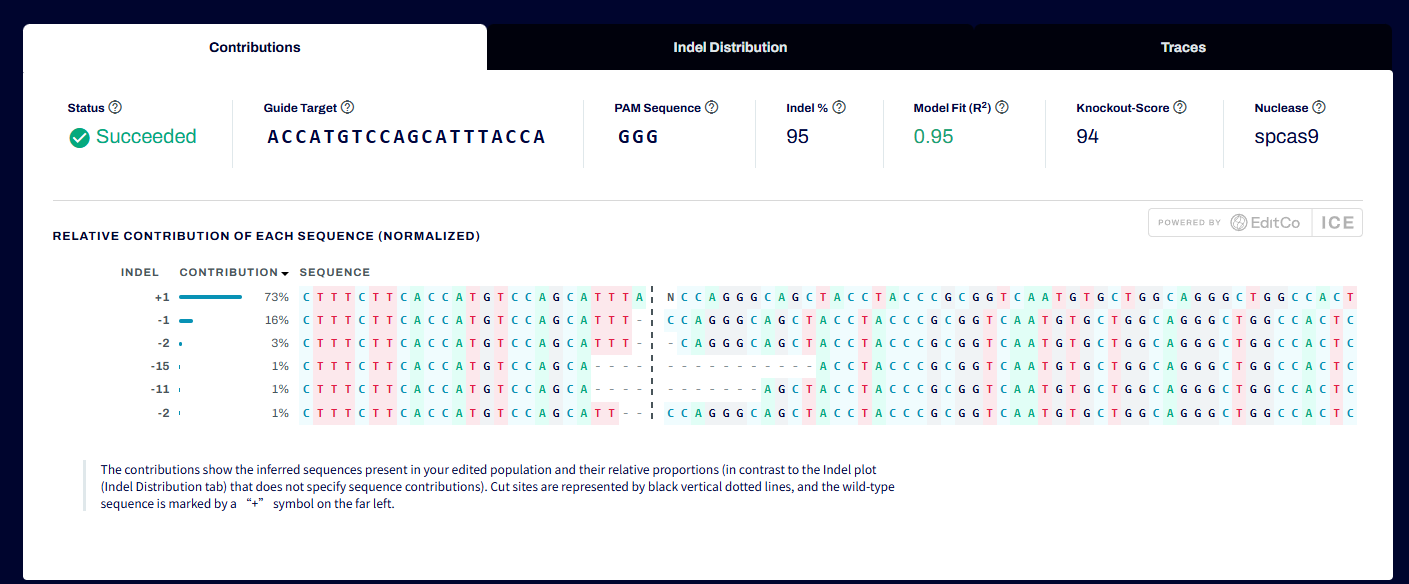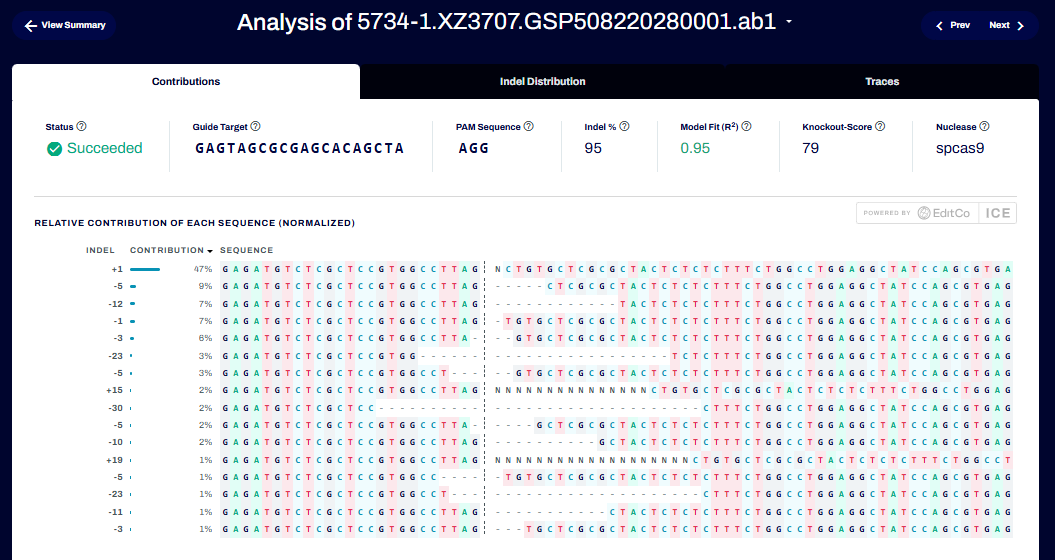Flash-Pro CRISPR KO Kit (For Organoids / Stem Cells)
The Flash-Pro CRISPR KO Kit (For Organoids / Stem Cells) achieves efficient and precise gene knockout by delivering pre-assembled complexes of deliv more
Cat.No: EDKO-K05





Size
50 μL 100 μL
Quantity


Product Description
The Flash-Pro CRISPR KO Kit (For Organoids / Stem Cells) achieves efficient and precise gene knockout by delivering pre-assembled complexes of delivery vectors, Cas9 protein, and sgRNA (RNP). This ready-to-use gene knockout kit is specially designed for research applications and includes EDITGENE’s innovatively developed CRISPR RNP delivery vectors and Cas enzymes validated in thousands of experimental cases. The specially processed delivery vector-RNP complexes enable highly efficient genome editing in mammalian cells.
Storage Conditions and Shelf Life
Shelf life:6 months. ,Store at -80°C ,and transport on dry ice.。 It is recommended to aliquot the product according to usage to avoid repeated freeze-thaw cycles.
Kit Components
| Cat. No. | Component | Size | Notes |
| EDKO-K05-50 | Delivery Vector-RNP Complex | 50 μL (sufficient for 3 × 24-well plates) | 24-well plate, 15 μL per well |
| EDKO-K05-100 | Delivery Vector-RNP Complex | 100 μL (sufficient for 3 × 12-well plates) | 12-well plate, 30 μL per well |
Note: This product provides only the integrated delivery vector-RNP complex. Users only need to supply the sgRNA sequence.
Optional Components
| Cat. No. | Option | Notes |
| 1 | sgRNA Design | EDITGENE provides sgRNA sequence design services |
| 2 | Positive Control | Delivery vector-RNP complex targeting human B2M gene |
Organoid Experimental Procedures
- 1.Organoid Culture and Seeding (24-Well Plate Example)
-
Culture organoids until healthy and actively growing. Digest and count cells, then seed 1.2×105 cells in 50 μL per well of a 24-well plate.
-
Note: Use well-growing organoids free from bacterial, fungal, or mycoplasma contamination. Digest organoids into 3-5 cell clusters. For organoids recently thawed from liquid nitrogen, passage at least twice before transfection.
- 2. Organoid Transfection
1)Transfer the delivery vector-RNP complexes from -80 °C to 4 °C and thaw slowly. Add 15 μL per well slowly, supplement with complete medium to a total volume of 100 μL, mix gently, and centrifuge the 24-well plate at 32 °C, 500 g for 90 minutes.
2)Collect organoid cells, centrifuge to separate cell pellets and supernatant. Embed the cell pellet for culture; use the supernatant with additional complete medium for maintenance.
3)After 24 hours of transfection, replace with fresh complete medium and continue culture.
Notes: During transfection, the cell number is low and the procedure involves multiple steps, so take care to avoid losing cells during handling. If a plate centrifuge is not available, 2 mL Eppendorf tubes are recommended as an alternative, while 1.5 mL tubes are not advised.
- 2. Analysis of Transfected Cells
72 hours post-transfection, extract genomic DNA from transfected cells and amplify the target region using specific primers (amplicon includes the sgRNA target site). Analyze gene editing efficiency using TIDE (https://tide.nki.nl/) or ICE (https://ice.synthego.com/#/, guide: https://www.synthego.com/guide/how-to-use-crispr/ice-analysis-guide).
Organoid Results

Figure1 Sanger sequencing alignment of mouse tongue organoids (specific gene).

Figure 2 Multiclonal ICE analysis of mouse tongue organoids (specific gene).
Stem Cell Results

Figure3 Sanger sequencing alignment of hIPSC-B4 cells (B2M).

Figure 4 Multiclonal ICE analysis of hIPSC-B4 cells (B2M).







